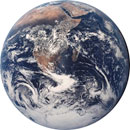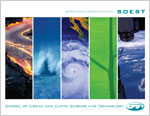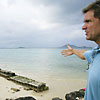the School
Outreach

Announcements
For seminars, recent grants, thesis & dissertation defenses, etc., see the SOEST Bulletin.
Hanauma Bay
Education Program
Every Thursday evening in January • 6:30 pm
Hanauma Bay Nature Preserve.
UH Sea Grant’s Hanauma Bay Education Program invites the public to learn about the Hawai‘i Ocean Observing System (HiOOS), whose primary objective is to integrate and expand ocean observing and forecasting throughout the Hawaiian Islands, and is a part of a larger effort spanning the Pacific Islands.
This lecture series highlights changes being observed in the ocean and coastline of the Hawaiian Islands and beyond. Visit the Education Center calendar page for details.
2009 Summer Course in microbial oceanography accepting applications
C-MORE is pleased to offer an international summer course Microbial Oceanography: Genomes to Biomes. The course will explore the dynamic and fundamental role marine microbes play in shaping ocean ecology and global biogeochemistry.
To apply for the 2009 summer course, please visit the 2009 course web site and follow the links. Application deadline is February 20, 2009.
For more information, download the flyer PDF.
SOEST Brochure
PDFs Available

Download a high-resolution (49MB) or low-resolution (6MB) PDF of the new SOEST brochure, providing an excellent overview of the school and its mission.
Hawai‘i’s Dynamic Ocean: Hawai‘i Ocean Observing System Lecture Series
Through 11 February 2009
6 pm
in the Outrigger Waikiki Hotel’s “Kalakaua Room”
(2335 Kalakaua Ave).
Download the flyer PDF
for details.
SOEST in the News
Saving Kailua Beach
Read more about it in Honolulu Star-Bulletin. Image courtesy of Jamm Aquino, HSB; click on it to see the full version and to launch a slide show of other images. Tiny diamonds implicate comet or meteor in mass extinctions
Read more about it at CNN.com, and in the New York Times and London Times Online. Image courtesy of the University of Oregon. Looking for extraterrestrial life in all the right places
Read more about it at Space Daily. Image courtesy of Space Daily. Lifecycles of real tropical cyclones successfully predicted
Read more about it in Science Daily, UH Manoa News, and the IPRC press release (PDF). Image courtesy of NASA. Three Top-Ten Rankings for SOEST ProgramsThree SOEST programs: Oceanography, Physical Sciences (2nd), Marine Science (4th), and Geophysics (7th) continue in good company in the Academic Analytics FSP Index for Top Performing Individual Programs 2006-2007. Read More about it in the UH Press Release. For more news, visit our News and Awards & Honors pages, and read the weekly SOEST Bulletin. | ||
SOEST Quicklinks |
||
Environmental Conditions
SOEST Emergency Information
Marine OperationsSOEST on Facebook
[ Top of this page ] |
Technical, Web, and Other Support
EmploymentThe Dean’s Overview of the School
|
|


 In a recent article in the journal
In a recent article in the journal  Associate professor
Associate professor  A team of scientists at the International Pacific Research Center (
A team of scientists at the International Pacific Research Center (
